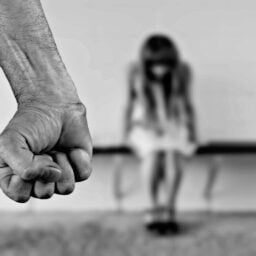DISCRIMINATION TRAVERSES EDUCATION AND WORKPLACE
Lower caste women have always been positioned at the lowest rung in India’s caste and gender hierarchy. They are largely kept uneducated and paid less than their male counterparts for the same work. Most of these women come from poverty-stricken households and have no access to schooling or education. In such households, men are automatically chosen to be educated due to low financial means. Educating women is considered a waste and they are engaged in household chores as well as handling the younger ones.
Their illiteracy forces them to take up menial jobs and worsens their situation to a level where there is no hope for betterment. Dalit women fare the worst and make up a major chunk of scavengers, landless labourers and prostitutes in brothels. These forms of discrimination are etching in the domain of hiring, wages, opportunities for moving upward, and working conditions. Without, being judged on the basis of merit they also overcome sexual assaults and violence. Their lack of economic, legal, and political stability is exploited by upper caste money lenders who push them into a vicious cycle of debt. Lower caste women face aggressive patriarchy in their roles as housewives and are victims of domestic violence.[1] Their families own negligible land and are often concentrated in the outskirts of the villages. Lower caste women especially Dalit women are exploited both physically and mentally harassed at the hands of money lenders and big farmers on whose land they worked. Poverty and the dire need to feed their families have pushed lower-caste women to endure unimaginable atrocities by the upper-caste people.
Lower caste women are also dominated and suppressed by their own community women when they try to rise upwards. The same happened with Bhanwari Devi in 1985 when she became an NGO worker (Satthin) to stop child marriages.[2] Women from the lower caste strata ridiculed her and advised her to stay within limits. When Bhanwari was raped by upper-caste men, women in the village claimed it to be her fault for being outgoing. The legal system failed her, with the judge going far enough to say that “raping any lower caste women would spoil the hands of upper-caste men”. Statistics reveal that four Dalit women continue to be raped every day despite stringent laws being in place. The year 2021 continues to be a mirror image of 1985 with the society and legal aid again backstabbing lower caste women.
HARBINGERS OF CHANGE- DALIT FEMINISM
The 20th century kickstarted the feminist movement in India with the position of women in a patriarchal society being questioned. These movements had travelled from the seemingly liberal West culture to India. The feminist struggles have classified all women under one umbrella without taking into account the differences they have due to factors like religion, caste, class, and creed. In the West, especially America the feminist struggle was confined to the racially superior, elite, white women and left the already subjugated Black women out of its ambit. Similarly, the feminist movement in India has only promoted the empowerment of upper-caste women and completely side-lined the problems of Dalit women.
Gathering courage and determination, Dalit women have bought forward their struggles and initiated a change in the form of Dalit feminism. Dalit feminism encompasses the fights and struggles of lower caste women against the dominance of caste and masculinity (http://www.jstor.org/stable/4403327).[3] It also emphasizes how Dalit women come to terms with dual patriarchy- within their community as well as outside. Despite this, their struggles often blend into the oblivion of the feminist movement. Most of the harrowing experiences that lower caste women face are unrecorded because their illiteracy keeps them back from writing and expressing dissent. Their social status and subjugation by society have rendered them helpless with negligible tools and platforms to express their voice.
Sharmila Rege, one of the prominent feminist scholars noted that women were thought to be suppressed because of their womanhood, excluding factors such as caste and social status. We continue to ignore the contentious topic of caste though it’s one of the most prominent markers of one’s identity in India. The term caste has now emerged as a vote bank factor and the epicentre of debates on the reservation.
Various organisations like the National Federation of Dalit Women and the women wing of Dalit Panthers have emerged to fight for the cause of lower caste women. The National Federation of Dalit Women is an international organisation founded by Ruth Manorama that fights for social justice and equality for Dalit women. The organisation has argued for the implementation of the Convention on the Elimination of All Forms of Discrimination against Women and ensured that the government goes beyond framing legal guidelines and passing bills (All India Progressive Women’s Association 2014). Further, community organisations have tried to fight against domestic violence which is often a way for Dalit men to compensate for their lack of societal status. These organisations have also taken a stand against the Devadasi tradition of temple prostitution wherein young Dalit women are forced into prostitution. Weak law enforcement at the ground level makes it baseless for these women to complain against such coerced crimes. The unawareness and vulnerability of lower caste women are exploited by upper caste people to continue repressing them.
CONCLUSION
The violation of the lower caste’s women rights and their subsequent exclusion from mainstream society has continued for far too long. Their inability to access resources and lack of awareness are continuously used as tools of exploitation by upper caste people. Government concern towards these women has remained concentrated on false promises of betterment. Bureaucratic officials and society have been apprehensive about uplifting these women because educating them would empower them to question wrongs.
Judicial decisions have been entwined with the inappropriate investigation and judge’s own biases. These inherent loopholes have placed lower caste women in a miserable position in society where they are dominated and compelled to act against their will. The need of the hour is to take real political and legal measures to uplift lower caste women and place them in a position of greater socioeconomic status.
Author(s) Name: Shreya Tiwari (OP Jindal Global University, Sonipat)
References:
[1] Rege, Sharmila. 2018. “710 Sharmila Rege, A Dalit Feminist Standpoint”. India-Seminar.Com. https://www.india-seminar.com/2018/710/710_sharmila_rege.htm.
[2] Pandey, Geeta. 2017. “Bhanwari Devi: The Rape That Led to India’s Sexual Harassment Law”. BBC News. https://www.bbc.com/news/world-asia-india-39265653.
[3] Gopal Guru. “Dalit Women Talk Differently.” Economic and Political Weekly 30, no. 41/42 (1995): 2548-550. Accessed May 3, 2021. http://www.jstor.org/stable/4403327.
















